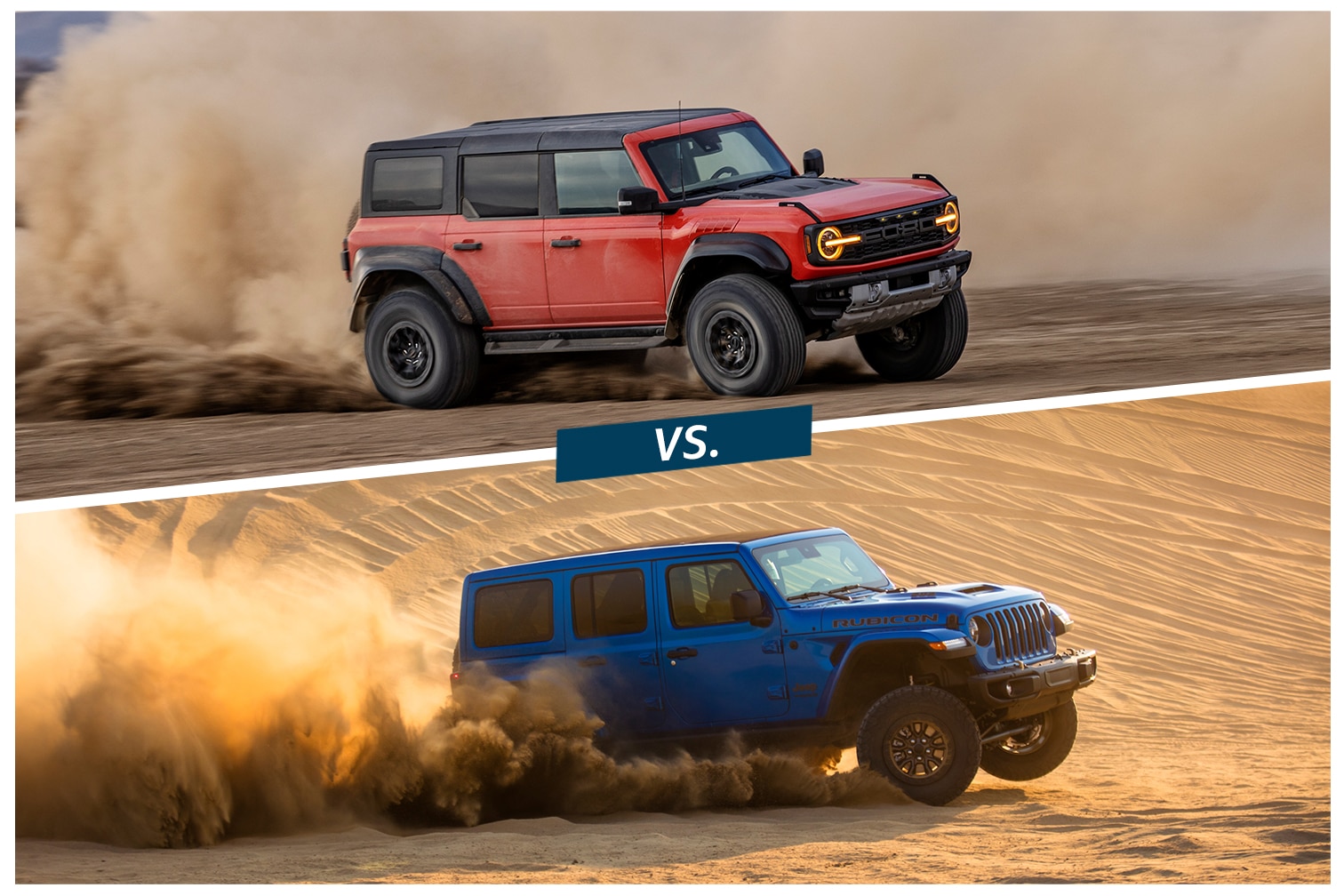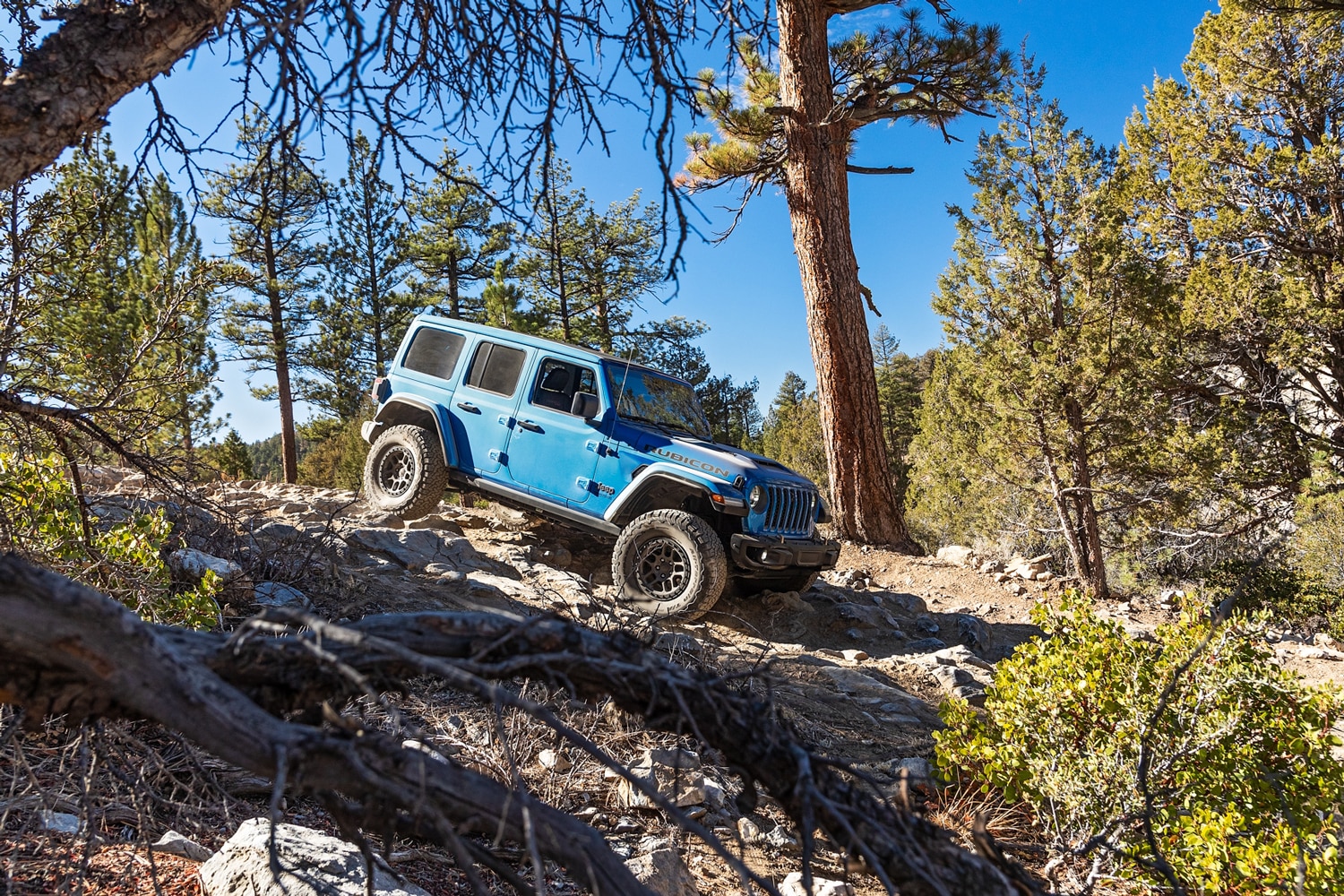Compared: 2022 Ford Bronco Raptor vs. 2022 Jeep Wrangler Rubicon 392 vs. 2022 Toyota 4Runner TRD Pro
These three off-road SUVs take different approaches to taming the wilderness.
 Ford/Jeep
Ford/Jeep
Article QuickTakes
The Ford Bronco Raptor, Jeep Wrangler Rubicon 392, and Toyota 4Runner TRD Pro represent the apex of their lineups and imbue already-popular people movers with a strong appetite for adventure. The Raptor and Rubicon 392 follow in the footsteps of fast, go-anywhere beasts like the Ford F-150 Raptor and Ram 1500 TRX, promising quick escapades across the dunes and the ability to climb over boulders. The TRD Pro heralds from the less intense side of the 4x4 spectrum but nevertheless delivers excellent off-road performance. But how do these big bruisers compare? Let's take a closer look at their engines, fuel economy, off-road capability, and pricing.
 Ford
Ford
Bronco Raptor vs Wrangler Rubicon vs 4Runner TRD Pro: Engines and Fuel Economy
In the Bronco family, the Raptor makes a significant performance leap over its siblings, including the mighty Wildtrak. Although Ford has yet to release official numbers, it promises more than 400 horsepower from the sport-utility's twin-turbocharged 3.0-liter V-6 engine—a sizable improvement over the Wildtrak's 330 horses. A 10-speed automatic is standard with the truck.
 Jeep
Jeep
The Jeep Wrangler Rubicon 392 towers over the Ford and Toyota in the engine department with its enormous, 6.4-liter V-8. With a whopping 470 horsepower and 470 pound-feet of torque, the SUV hits 60 mph from a standing start in a claimed 4.5 seconds, thanks in part to its smooth-shifting eight-speed automatic gearbox.
 Toyota
Toyota
The Toyota is the only member of the trio that doesn't offer a unique powertrain for its off-road special. The 4.0-liter V-6 under the TRD Pro’s hood produces the same 270 horsepower and 278 pound-feet of torque as it does in any other 4Runner and links to the same five-speed automatic transmission, whose design hails back nearly 20 years.
When comparing fuel efficiency figures, that mountain of V8-power comes at a price when it's time to fill up, with the Jeep showing a combined EPA rating of just 14 mpg. That's 3 mpg worse than what the also-thirsty yet significantly weaker Toyota manages. We don’t have the Raptor’s fuel-economy numbers yet, but we suspect it won’t perform as well as the Bronco Wildtrak, which tops out at 19 mpg combined.
 Ford
Ford
Bronco Raptor vs Wrangler Rubicon vs 4Runner TRD Pro: Off-Road Capability
Compared with the 4Runner, the Raptor adopts a beefier setup, starting with its 37-inch BFGoodrich KO2 all-terrain tires. These play a substantial role in giving the truck 13.1 inches of ground clearance. Like the TRD Pro’s suspension, the Raptor's features Fox dampers. These 3.1-inch-diameter units include Live Valve technology that adjusts the suspension stiffness based on the conditions. Ford also provides remote reservoirs for the rear dampers to cope with the heat that comes with high-speed driving on rough terrain. The suspension also affords 13 inches of wheel travel up front and 14 inches out back, making the SUV an ideal Baja blaster. A pair of locking axles (including a solid Dana 50 unit out back) further improve the Bronco Raptor's toughness, and the SUV boasts an approach angle of 47.2 degrees and a departure angle of 40.5 degrees.
 Jeep
Jeep
The Jeep Wrangler Rubicon 392 falls between the TRD Pro and Raptor when it comes to tire size, as its standard KO2s measure in at 33 inches tall, and it adds strength in the form of two Dana 44 solid axles with electronically locking differentials. Capable of crawling around technical trails and speeding across the desert, the 392 enjoys full-time four-wheel drive, a two-inch lift over the standard Rubicon (providing 10.3 inches of ground clearance), and Fox dampers. Jeep includes a remote disconnect for the front sway bar as well as off-road-specific drive modes. If that's not enough, buyers can outfit the Rubicon 392 with the Xtreme Recon package, which boosts ground clearance to 11.1 inches and swaps in 35-inch-tall tires. It also improves the Wrangler's approach angle from 44.5 degrees to 46.7 and its departure angle from 37.5 degrees to 39.8.
 Toyota
Toyota
The 4Runner compensates for its modest power with a respectable suite of off-road gear. The TRD Pro rides on 32-inch-tall Nitto Terra Grappler all-terrain rubber, trundles down the trail with uprated springs, and maintains control over the rough stuff with a set of 2.5-inch-diameter Fox dampers featuring an internal bypass. The 4Runner also boasts a locking solid rear differential, an aluminum skid plate, low-range four-wheel drive, multiple off-road drive modes, and 9.6 inches of ground clearance. With an approach angle of 33.0 degrees and a departure angle of 26.0, the TRD Pro is a strong rock-crawling choice that also benefits from both a crawl-control feature and good low-end torque delivery.
 Ford
Ford
Bronco Raptor vs Wrangler Rubicon vs 4Runner TRD Pro: Pricing
When the Bronco Raptor arrives later this year, it will be with an entry price of $69,995. It has a much more powerful engine, larger complement of off-road equipment, and a longer list of comfort features may help you justify spending the extra bucks.
 Jeep
Jeep
Jeep is relying on its blazing V-8 engine to convince customers to fork over at least $76,395 for the Wrangler Rubicon 392. It's the most expensive of the three, and that's before you add on the extra $3,995 for the Xtreme Recon package.
 Toyota
Toyota
Of the three, the Toyota is the most affordable, but its $53,635 base price can be a little difficult to swallow when you consider its less-than-modern drivetrain, barebones cabin, and dated tech features.



